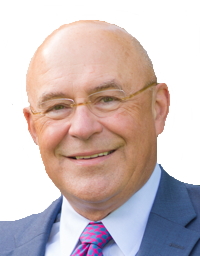The food security and environmental challenges of the 21st century are profound, but then there are people like Anna Maria McEvoy to stir your optimism. We urgently need more scientists like her — especially in Asia and Africa. And this is why.
Three years ago, Anna, then 15, was on her way to school in a small town in Ireland when she noticed “a red bloodlike substance oozing from the bark” of horse chestnut trees on her path. She decided to investigate.
Soon she learned that the trees were suffering from a disease called bleeding canker, which had already been identified elsewhere in the United Kingdom and some other European countries. But that only sparked other questions. Had the disease now spread through the rest of Ireland? If so, to what extent? And was the disease agent in her country the same bacterium that had been identified as the villain elsewhere?
Before long Anna’s parents and her mentor at school, Frances O’Regan, were driving her around the length and breadth of Ireland to locate horse chestnut trees and collect bark samples. Eventually, her own analysis of the DNA she had learned to extract from the bark proved that Ireland’s horse chestnuts had indeed been afflicted by the same bacterium infecting their counterparts elsewhere. Then, to top off her research project, she developed a better, faster genetic test for identifying the bacterial agent.
Thanks to Anna, Ireland’s tree experts now have a better chance of saving some of their country’s horse chestnuts. She rightfully earned a spot in the world’s largest international pre-college science competition, the Intel International Science and Engineering Fair and won the first place Monsanto Award for Innovation in Plant Science.
To me this story is heartening not only because Anna, now 18, is a young female interested in the traditionally male-dominated fields collectively called STEM (Science, Technology, Engineering, Math). It’s also encouraging because she had a whole infrastructure to support her in that interest: her parents, Mrs. O’Regan at her school, and several professors who gave her access to their laboratories and taught her how to conduct tests in them.
The STEM-related needs of the 21st century are so profound that they demand all the brains this planet can muster. Somehow over the next several decades, humanity has to figure out how to meet the rapidly growing worldwide demand for energy – projected by researchers at the Massachusetts Institute of Technology to double by 2100 – while we simultaneously slash greenhouse gas emissions from fossil fuels.
And somehow, by 2050, we have to figure out how to feed 2.5 billion more people. With prosperity – and the demand for richer diets – rising elsewhere, we’ll actually have to meet a projected 70 to 100 percent increase in food demand in just 35 years.
And by the way, we’ll have to do this while the climate is changing and with fewer resources than we use today.
Meeting these inter-related challenges of energy and food will require new technologies. Fortunately for all of us, the advances in biology and data science offer great promise – and we have a profound need for scientific innovation – which means we need to educate as many young minds, all over the world, as possible.
In my field, agriculture, and in my country, the United States, the need is especially acute because 25 percent of the Ag/Food Chain workforce is 55 or older. That means there could be more than 1 million jobs opening in food and agriculture over the next 10 years. We need to fill those jobs with people with the educational backgrounds to move us forward. And we especially need to do a better job of educating all students so that we tap the talents of everyone.
Women and underrepresented minorities are particularity underrepresented in the fields of science, technology, engineering, and mathematics. African Americans, American Indians/Alaska Natives, and Latinos— who have historically comprised a minority of the U.S. population are growing in size and influence. According to the National Action Council for Minorities in Engineering these groups constitute 30 percent of the U.S. population, and by 2050, these groups will account for greater than 40 percent of the U.S. population. Contrast these metrics with the number of underrepresented minorities earning bachelor’s degrees in engineering; taking home only 12.5 percent of all such degrees in 2011. Higher education experts say this gap poses an alarming problem not only to universities but also to the nation as a whole.
The need for more STEM education is even more acute in the developing countries. Most of the world’s hungry people today live in them, and nearly all of the population growth is going to take place in them. In these countries, women on average make up 43 percent of the work force, and more than 50 percent in some parts of Asia and Africa. Yet they have less access to information and skill training, not to mention assets like land and credit. If we can help these women gain more skills and access to other opportunities, they can free up more of their time while feeding their children better and even sending their kids to school, enabling families to escape generational poverty traps.
Monsanto feels a deep responsibility to address these needs and is therefore active both in the United States and in other countries around the world through programs like the Beachell-Borlaug International Scholars, America’s Farmers Grow Rural Education and America’s Farmers Grow Ag Leaders. Much more, however, needs to be done. The challenges we face are monumental.
But with more and more people like Anna McEvoy, we can rise to meet them.
Dr. Fraley will be participating in the panel session: “Empowering Women and Girls Through STEM Education” at the Borlaug Dialogue today. Follow #FoodPrize15 for the latest news and conversations from the conference.



